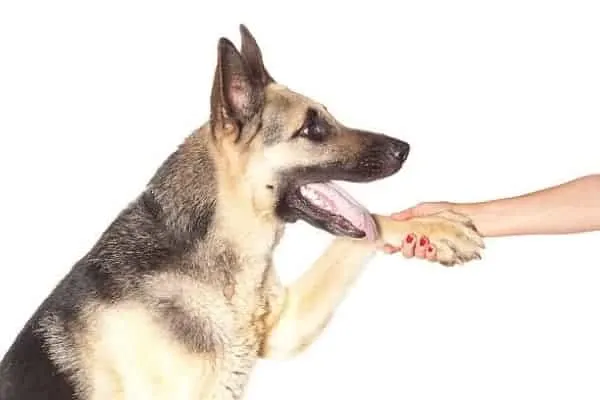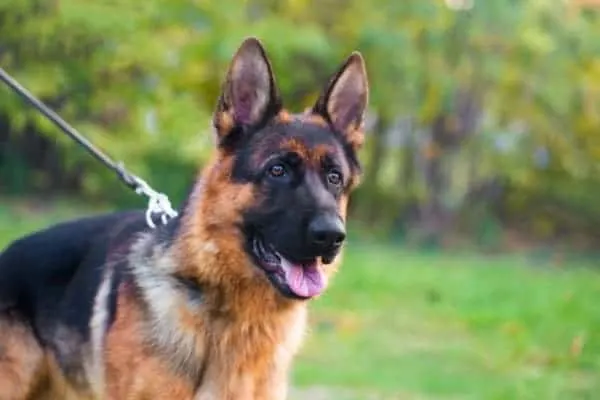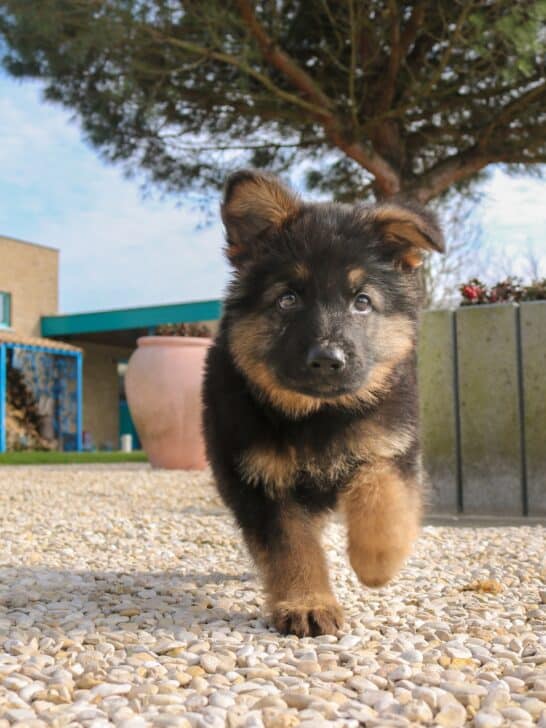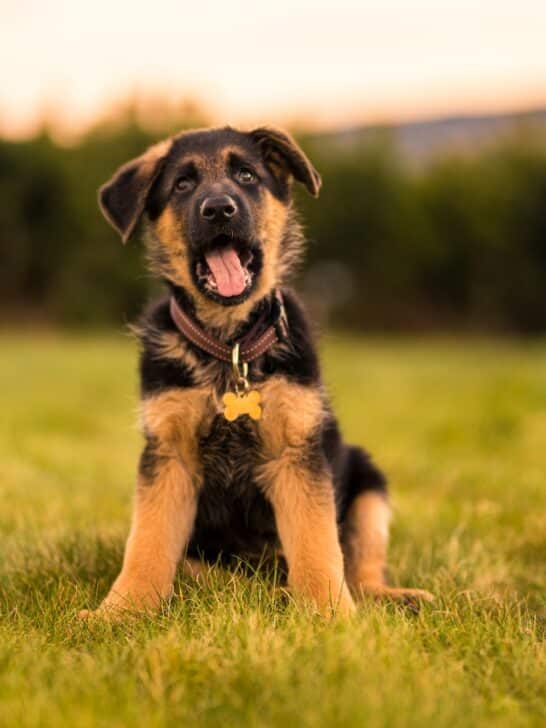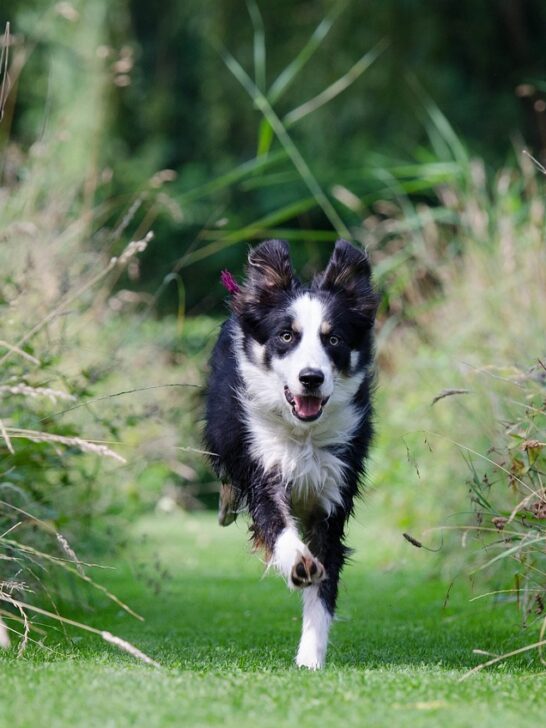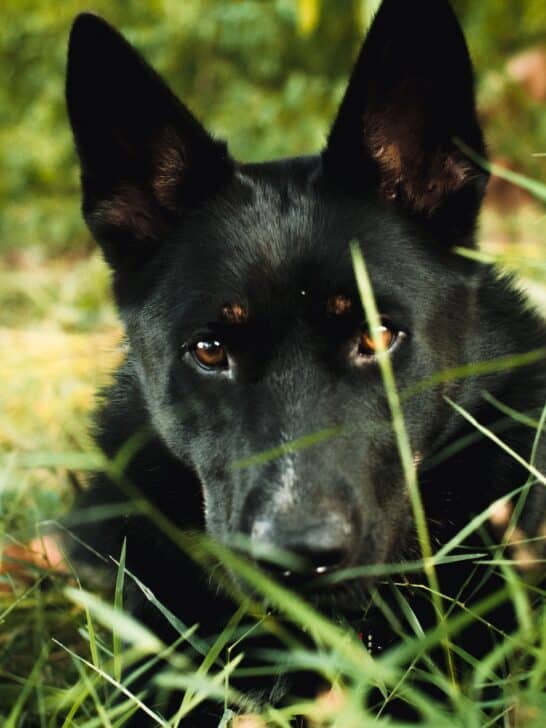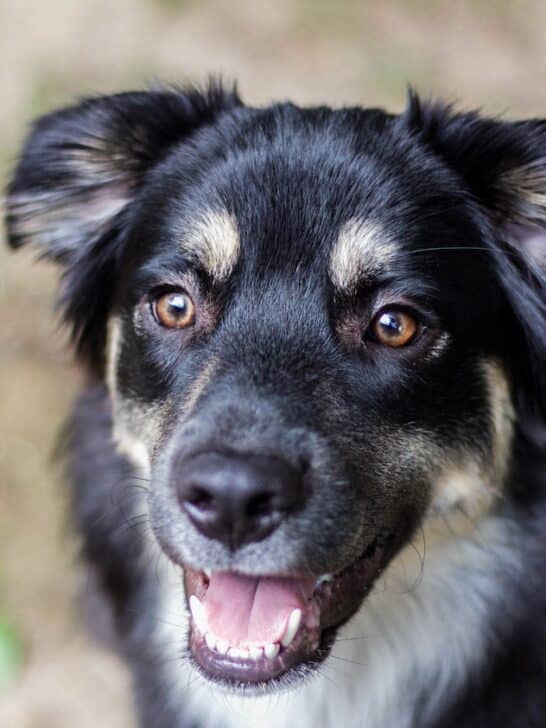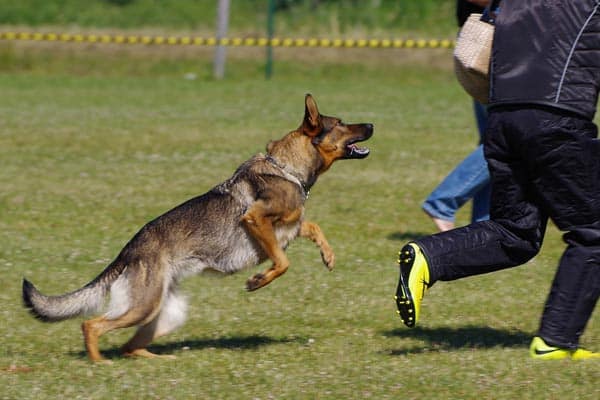What Is the Best Way to Train Your German Shepherd For Personal Protection?
How to train my German Shepherd for personal protection may be a burning question on your mind. It is not surprising for you to relate your German Shepherd to protection duties.
Besides looks, a couple of the top appeals of the German Shepherd Dog are guard and protection.
You may also have some understandable concerns about training your German Shepherd for personal protection. What about aggression and inappropriate dog attacks?
Will your dog someday turn on you? How would you even tackle the challenges of training and owning a pet armed as your protector?
A German Shepherd is among the best breeds for personal protection training because of her obedience and trainability, focus and perseverance, intelligence and strength, and loyalty and guard instinct.
Whenever you train a dog for tasks such as protection or guarding, you must exercise judgment and base your methods on your dog’s personality and abilities.
Personal protection is an advanced skill for dogs and therefore requires socialization, basic obedience, and certain conditioned behaviors.
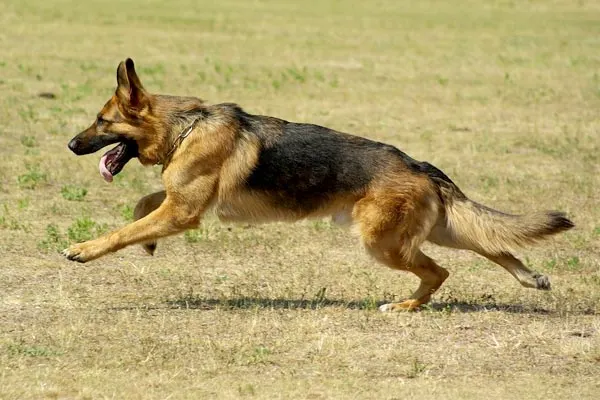
What is a personal protection dog?
A personal protection dog guards you or your family at your command. Typically, if you have a protection dog, she is with you most of the time.
She can prevent home invasions, car hi-jackings, and purse snatching. A personal protection dog usually receives training to wait for your command before attacking.
Many companies who specialize in training and selling protection dogs realize the high likelihood that they will go to families.
Ideal personal protection dogs do well with other animals and children in the home. However, they will not act like your typical easy-going pet in social settings such as the dog park.
Never assume a professionally trained protection dog will make a good family pet.
Personal protection dogs are beyond the scope of what most owners need or want. If you have a dog trained for protection, courts will hold you more accountable if your pet bites someone.
A protection dog can be more of a risk in your house if poorly trained.
Nonetheless, while dogs are great crime deterrents by their mere existence, only a protection canine with formal training can reliably prevent home invasions and similar acts of violence against you.
How do you choose a dog for protection work?
There are a few crucial criteria you should consider when trying to decide on a dog for protection. One of the most important considerations is whether you need a personal protection dog in the first place.
Knowing the different protective roles a dog can hold will better equip you to decide whether to train your pet for protection.
Watch Dog
Many dogs sound the alarm to announce guests, unusual noises, intruders, and anything else outside of the ordinary daily routine. Watchdogs are alarmists who bark but take little to no action.
They may charge at an intruder or make dramatic threatening displays but will not make physical contact.
Most families do well with watchdogs because they require the least training and maintenance and pose no liability.
Guard Dog
Some watchdogs have good guarding potential, but many guard breeds have a natural ability for it. When you think of a German Shepherd or a Doberman, you immediately recognized the guarding capabilities.
Guard dogs announce unfamiliar people and occurrences and will take action if necessary. Usually, guard dogs act on their own initiative, whether based on training or instinct.
There are degrees of guarding that a dog can perform.
- Sentry – Patrol a designated area, usually outside and with a perimeter. Dogs who work in junkyards or secured storage units are examples of sentry guards. The military also employs patrol guard dogs.
- Home security – Guards home or yard when the owner is not home and is protective when the family is home. May act instinctually or may have formal training.
- Attack dogs – Different from protection dogs, they attack on command with the intent to kill if warranted. Attack dogs are weapons usually for the police force and military and are not suitable as pets.
Personal Protection
Personal protection dogs differ from guard dogs in a couple of major ways. They protect people or moving targets as opposed to guarding property or territory.
Guard dogs can serve a protective role when they guard your home when you are there.
Personal protection canids also rely on commands before acting. You, the owner, can set the parameters on how much independent action your protection dog can take.
However, you are generally safer the more control you exercise.
Type
Your job of training a personal protection dog will be much easier if you choose a large breed from the working group.
Moreover, within the working group, you should select a dog breed that has a background in guarding and protecting.
Many dogs who had the task of guarding livestock can make good personal protectors. Include the herding group in your search.
Keep in mind the herding group of the AKC was once part of the working class and did not split until 1983.
Breed
Once you have narrowed your search from a broad group to a specific breed, you need to dig into your potential dog’s pedigree. If necessary, have someone help you read canine family trees.
Many breeds, like the German Shepherd, have a show line and a working line. For personal protection, you want a working dog.
According to Nitrocanine.com, you do not want to buy from someone who mixes show and working lines. You will have a high probability of obtaining a dog with conflicting drives and thus a confused psyche.
Some of the top breeds to consider are as follows:
- German Shepherd
- Rottweiler
- Doberman Pinscher
- Cane Corso
- Giant Schnauzer
- Bull Mastiff
The above breeds appear on multiple lists, but you can consider many others such as the Great Pyrenees or Dutch Shepherd.
Required Traits
The majority of guard dogs began in protective roles for livestock and sometimes children. Few breeds had an original purpose in personal protection like the Doberman.
However, guard dogs can readily transition to personal protection if they have a few desirable traits.
- Obedient
- Trainable
- Ability to bond strongly with a person
- Emotional stability
- Even temperament – I do temperament testing to check for stable nerves; consider the American Temperament Test which has a section specifically for a dog’s protective instinct
- Health – Proper orthopedic and eye certificates on parents if relevant
- Naturally protective
- Watchful, alert
- Large-prey dogs make the best protection animals according to Petsworld – Thus, the large herding types are good candidates. These dogs do not necessarily hunt large game, but their traditional roles equip them with the ability to grip and hold large prey.
Lay the proper groundwork when training your German Shepherd for personal protection.
Although a German Shepherd’s guard instinct may appear as early as eight weeks old, you will not complete formal protection training until she is two or three years of age.
You will note that the three-year mark corresponds with how long full socialization of working German Shepherds may require.
To ensure your dog behaves appropriately after protection training, you must take preparatory steps to lay a solid foundation.
Socialization
All training for German Shepherds revolves around socialization. An often-overlooked benefit of conscientious socialization is you can learn your dog’s personality and temperament.
Socializing your Shepherd will make him less reactive to unfamiliar people, places, noises, and animals, but will not completely eradicate personality flaws inherent in some family lines.
The following personality traits are unsuitable under any circumstances for protection training.
- Fearful, cowering
- Excessive aggression
- Too willful, alpha dog
- Excesses in any traits – i.e., prey drive, pack drive, defensive drive, rank drive
Unacceptable personality flaws usually refer to excessive character defects.
Professionals can work with a moderately aggressive dog or a Shepherd who lacks confidence and still turn her into a great protection dog.
It takes an expert, however, to detect and work with reactive dogs as opposed to canids who are so fearful or dominant as to be a harm to themselves or their owners in personal protection.
Dominant dogs develop the fight drive necessary for defense but still need to accept direction from their handlers.
Inappropriate socialization is as bad as not socializing your German Shepherd at all. Do not encourage shyness or timidity by petting or coaxing your pet.
Likewise, do not encourage growling or other aggressive behavior when meeting people. Protection dogs do not need to be aggressive or mean, and promoting such behavior will set your dog up to be a liability.
Obedience Training
Your German Shepherd should have the same handle on obedience for protection work as he would for agility.
There are several uncompromising standards for obedience training if you want to train your dog successfully for personal protection.
- Come
- Sit
- Down
- Bark and no bark – Useful commands but more difficult than basic obedience
- Off-leash – Heel, stay, leave it (or out)
How do you train your German Shepherd for personal protection
Drive Training
It is difficult to imagine a working line German Shepherd without drive, but it is your task to hone work ethic and a desire to learn.
To successfully train your dog in protection work, you also need to be able to differentiate between drive types and engage them at the correct time in your Shepherd’s development.
Prey Drive
An instinct to chase something down and grab and shake it to death is inherent in all dogs, albeit to different degrees.
Breeders have selected against prey drive in some dogs like the King Charles Cavalier Spaniel. In others, like the German Shepherd or Border Collie, they have modified it for other purposes such as herding.
In still others, they have exaggerated the prey drive for racing like in Greyhounds, or destruction as in terriers.
A healthy level of predatory drive is necessary for a good protection dog and is genetic.
You can work your pup’s prey drive at a very young age. At ten weeks of age, you will introduce your pup to different prey items and engage in games to encourage prey drive.
The best starter “prey” is a rag or sack. Puppies can handle rags easily in their progression to a sleeve, and late-starting adults will gain confidence and develop the proper technique.
Rags are easy to move and cause to fly about if you need to regain your pup’s attention.
Two people are ideal for getting your dog used to a helper, an integral part of bite work, and subsequent protection skills.
Working initially with prey drive establishes a firm foundation for future protection. Prey drive work is a comfortable and nonthreatening environment for your puppy, and he can develop skills without stress.
- Teach what prey items are – Maintain that inanimate object is prey and not the handler.
- The pup learns commitment or a firm bite on the prey – Helper will give the puppy reason to think she may lose the prey by wiggling it when she loses interest or tugging at it when she weakens her grip. It also teaches the dog to counter.
- The puppy learns to bite hard on initial strike – Helper does not release prey until she commits to a firm grab.
- Your dog jumps up before she can “make prey” – Helper moves the sack so the puppy must make a small effort to grip it.
- Teach pup how to stimulate action during prey work – Must yelp before helper moves prey. Also teaches the importance of other priorities than biting.
During your introduction to bite work, you or the handler will have your pup on a leash, and the helper has the rag or sack.
The primary goal is to establish your dog has a healthy prey drive and get her interest and maintain it.
The various stages of prey promotion increase your pup’s degree of commitment, after which she gets a reward by carrying the “prey” off the field at the end of work.
She learns how to interact with the helper, handler, and prey.
During initial bite work, make sure you are also dedicating some time off the “field’ for obedience training.
Defense
In the next phase of bite work, the focus gradually shifts from prey that the dog pursues to the helper who approaches the handler and animal.
A defense drive is crucial for your German Shepherd to perform well as a protection dog.
If you try to teach defense too early or perform it incorrectly, you can produce neurosis or teach avoidance in times of stress. Either will undermine your dog’s confidence.
A defense drive means your dog has the instinct to stand and protect herself against a perceived threat.
Unlike prey drive, dogs do not universally have it, and those who do will not show it until puberty and later.
Defense drive is where the breed is important. Dogs like German Shepherds and Rottweilers inherit a defense drive while other working canids like Siberian Huskies do not.
You can also think of it as natural protectiveness.
Dogs who do not have a defense drive or have poor training will be inclined to avoid situations of extreme stress rather than fight.
For obvious reasons, you will not be able to count on such a dog for personal protection.
On the other hand, dogs with a strong defense drive but natural shyness or timidity may react overly aggressively to perceived threats.
Introducing countering tactics in your puppy during prey drive promotion was her first introduction to defensive work.
Promoting defensive drive continues along the same vein, so exposure to stress is more gradual.
Once your dog counters minor threats like attempting to steal prey and then leaning over and challenging, you can progress to the helper hiding and springing out or approaching with malice.
In defense training, your dog’s reward is the helper runs away.
You should approach defense training in small increments because it is highly stressful for dogs. We cannot emphasize enough that you should have enlisted the assistance of a professional at this point.
Actions of the handler and helper are crucial in the defense phase, or you can cause permanent detriment to your dog’s confidence. There is no substitute for knowledge and experience.
Fight Drive
According to Leerburg.com, fight drive is a combination of genetic factors and experience.
You cannot train fight into a dog, but a dog without formal training on how to bite for protection never develops an effective fight drive.
Fight drive is where your dog can channel defense into prey drive on his own. When you promote the fight, you channel the transition for him.
Advanced defense training and fight promotion are tough to teach your dog, and in most cases, you should leave it to a master.
If you ruin your German Shepherd with improper defense promotion, you will never be able to instill an effective fight. Confidence is not a quality you can regain quickly in your dog.
A properly trained German Shepherd with fight drive has unwavering confidence that when he engages in a confrontation, he will win.
By the time your dog reaches this stage, he can train in realistic situations and unfamiliar settings and without a visible sleeve.
Your dog will progress beyond Schutzhund and sporting trials and be able to engage in work with crowds, home invasions, and other cases of personal protection.
Fight drive can be difficult to qualify and an overused term. Some trainers alternatively use the phrase competitive drive.
Schutzhund Training
Schutzhund can provide a good foundation for personal protection training. It offers a solid premise in bite work as well as temperament evaluation.
Some professional academies use Schutzhund dogs, training them further, and then matching them with interested clients.
Schutzhund and similar training programs like French Ring require further progression for practical protection work.
Dogs realize Schutzhund is a sport or event and do not learn how to react to unpredictable stressors that occur in real-life personal protective situations.
How much does a protection dog cost?
Paying a professional to train your dog for personal protection can cost you $10,000 to $30,000. The price may or may not include evaluations for temperament and mental soundness.
There are different levels of protection. In some cases, professionals decrease your liability by training your dog in protection without any expectation that your pet will bite or try to apprehend a perpetrator.
Such a dog is more of a watch animal. Some dogs learn to protect you in the home, and others protect during travel.
For a company to provide you a fully-trained protective dog can cost you $20,000 to $80,000, sometimes dependent on pedigree. You usually also pay for someone to teach you how to work with your new dog.
Summary
There is no way to cover the full scope of how to train your German Shepherd for personal protection. Experts have written numerous books about theories, backgrounds, and methods.
You can find endless videos discussing the same.
Most focus on bite work because a personal protection dog will be armed to engage and even attack if necessary. She needs to be confident and capable.
Basic steps to training a personal protection German Shepherd are reasonably straightforward.
- Socialization
- Prey work – Introduction, beginner helper and prey counter techniques
- Triggering work in the drive
- Temperament evaluation – 6 months or older
- Advanced prey work
- Defense work – 11 to 14 months or older
- Making the transition to seeing helper as a sparring partner, developing competitive or fight drive; real-life simulations – 18 months
This video demonstrates an introduction to prey drive work for a puppy. Notice the lightweight rag and how the work is no threat to the dog.
Note in this video that the dog has been doing protection work for some time.
Note in personal protection that the owner has complete control over the dog. You say when to attack, and when you tell your dog, “Out,” he immediately lets go.
Notice the complete and unquestioning obedience. One final thing on this dog is that he is16 months old, and the speakers emphasize how advanced he is. Personal protection training takes a long time.
As an aside, the dog is dark sable, strongly suggestive he comes from working lines. He has drive, focus, courage, and a steady temperament.















